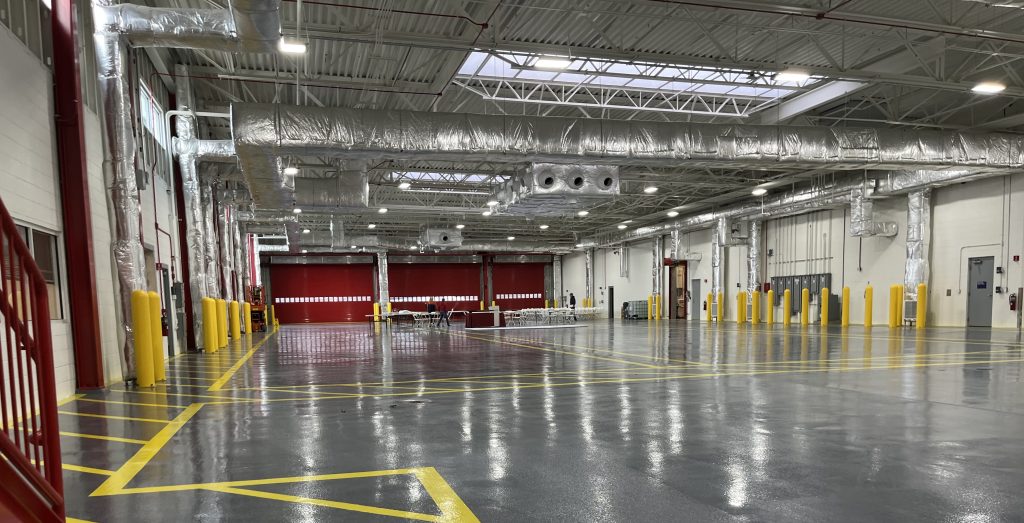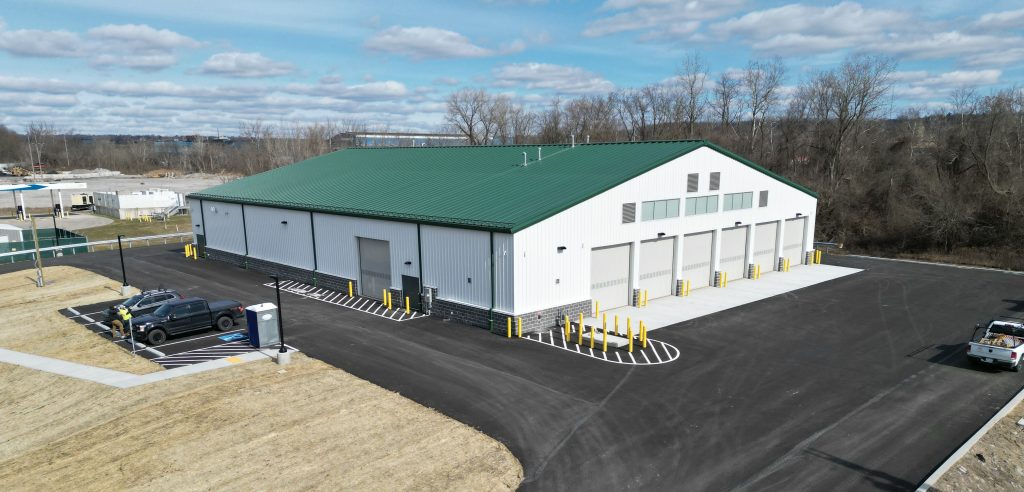PennDOT BPT’s Transit PMO: A Staff Inflection Point
By Arthur Schurr | 7/1/2024
BY ARTHUR SCHURR

Sometimes renting is better than buying. And the Pennsylvania Department of Transportation’s (PennDOT) Bureau of Public Transportation (BPT) found a unique way to apply this principle. Rather than staffing up to implement an $800+ million capital delivery program, the BPT opted to create a project management organization (PMO) for its capital program. Routinely practiced in some departments, this is a first for PennDOT transit in the Keystone State.
“We have a very limited number of staff,” explains PennDOT BPT Manager John Levitsky. “And there are areas where we need expertise. So, we needed to get some exceptional folks who could help us manage our facilities projects. We have a significant amount of money and we’ve been tasked to spend it responsibly and effectively. Bringing a PMO on board helps us do that because they push and manage projects and advise us. We use their expertise to help us make more informed decisions.”
Keystone Context
Born out of 2013 legislation, PA Act 89 funds road projects, bridge repairs, and public transit projects. Pennsylvania awards approximately 10-12 percent of that funding to PennDOT for transit, excluding the Southeastern Pennsylvania Transportation Authority (SEPTA), Pittsburgh Regional Transit, and the Delaware River Port Authority. Ranked fourth in the U.S. in direct support for public transportation, PennDOT spends more than $1.6 billion annually, overseeing operating and capital investments for 33 fixed-route systems, 42 community transportation systems, passenger rail service between Pittsburgh and Philadelphia (Keystone Corridor), and 10 intercity bus routes. In addition, lottery funds pay for nearly five million reduced-fair trips for senior citizens and persons with disabilities on community curb-to-curb transportation. But with all transit infrastructure there’s a catch. Infrastructure ages and must be updated, repaired, and/or replaced. With nearly 13 million residents in 67 counties covering more than 46,000 square miles, PennDOT must help local transit agencies operate and maintain public transit. Levitsky and his team see the PMO as the perfect mechanism for that effort.

Providing a central point of contact for the “full lifecycle of projects, from planning and programming through construction and maintenance,” the PMO includes everything from technical reviews to vital data reporting to providing dedicated staff. Most importantly, the PMO empowers the BPT to “scale quickly to meet the expectations of funding partners and the public at large.” But the BPT isn’t the only office that benefits from the extension of staff.
“Many local transit agencies don’t have the staff to develop projects for facilities,” adds PennDOT Engineering and Construction Contracts Manager Emily Adams. “For most, those are once-in-a-career-type projects. They present a lot of complications including state environment requirements, Buy America provisions, NEPA [the National Environmental Policy Act] requirements, NHPA Section 106 [the National Historic Preservation Act] requirements, etc. With the PMO, we have help managing all of these contracts, the transit agencies, and we keep things moving forward.”
Invention of Staff
PennDOT and the BPT named Dallas-based professional services firm Huitt-Zollars as their first PMO. A five-year contract, the PMO helps BPT with more than 25 open-ended consulting agreements with multiple planning, engineering, architecture, and construction management firms. Contracts cover everything from overseeing the implementation of a bus wash to building a $150-million facility for capital-area rabbittransit. Each year, local transit agencies submit their wish list to the BPT. But that alone can prove difficult in some cases.

“We issue open-ended contracts so that we can do work orders off of those contracts as needed. The open-ended process allows us to take advantage of the PMO’s expertise and experience,” adds BPT Director Danielle Spila. “But even just issuing an RFP for some of these projects is too difficult or time consuming for a lot of small agencies. In some cases, they just don’t have the capacity or the experience.”
Tamra Dann, Huitt-Zollar’s transportation practice vice president, agrees. And she would know. A licensed Pennsylvania engineer and 35-year transportation veteran (including eight years with SEPTA), Dann also serves as Huitt-Zollar’s executive in charge of the PMO.
“It’s complex,” she explains. “The BPT distributes considerable funds, but the [construction] contracts are owned by the transit agencies. So, if you’re designing a project for Newcastle County, you deal directly with them for the design, layout, and needs of the project. But it works very well because we’re all on the same page, we know these projects and many of the players, and we provide whatever the BPT and the local agencies need at a moment’s notice.”
Contracting and Expanding
So, how does it work? Consider the $150 million rabbittransit storage and maintenance facility for up to 120 buses. Built more than 100 years ago to maintain trolley cars, the facility’s original subsurface trolley maintenance pits were collapsing, resulting in large surface deformations. Concerned for driver safety and potential bus damage, rabbittransit contacted PennDOT for technical assistance and the PMO quickly developed repair alternatives. Factoring in cost, operational impacts, environmental compliance, and long-term maintenance, Dann and her team developed a solution that included pumping cement slurry under the concrete bus barn floor.
Completed on an accelerated schedule—less than three months from the original request—rabbittransit Executive Director Rich Farr believes the PMO played a decisive role, “Huitt-Zollars quickly solved a very serious issue for our agency. Their team facilitated a cost-effective mitigation plan and handled all the details.”
Examples abound in different ways. For example, prior to the PMO transit facility designs and bid documents had no consistent protocols. The PMO standardized the design process with specific work elements, schedules, and reviews, including process checklists, greatly streamlining project development.
Another example centers on asset management. In many regions, facility maintenance often receives short shrift; bus service takes priority. As a result, PennDOT routinely received grant repair requests for facilities whose lifecycle had been compromised by skipped maintenance. The PMO developed a concise building maintenance plan for new facilities that helped guarantee local agencies would perform required building maintenance activities, greatly reducing future requests to PennDOT for largely avoidable repairs.
Finally, the PMO helped significantly with transit facility programming. With funding secured, PennDOT needed an organized method to forecast how and when funding would be used for new and/or upgraded transit facilities. The PMO developed a database of current and planned projects by fiscal year to analyze need versus available funding. Providing a strategic framework, the database now helps optimize decision making and keeps PennDOT leaders and legislative committees informed on funding allocation and effectiveness.
Staff Perfection
Without question, BPT’s commitment to highly effective communication, an efficient interactive reporting structure, and clearly defined scope and roles helps streamline the process and make things work optimally. But Levitsky also credits another element for the program’s success.
“Having a good fit culturally is very important. A lot of their team have worked on PennDOT projects before, so they really understand our needs and expectations. And that’s helped us take even greater advantage of their expertise. For example, they’re helping us with management tools, database trackers covering all phases, after-action reviews, preventative maintenance manuals, and a lot more. But the big thing for us is pushing projects forward and making sure things are getting done right and on time, and that the right people get the information they need when they need it.”
Levitsky points out another advantage. Many other states can only manage one or two large transit construction projects at a time. But with the PMO, the BPT has six or seven in construction at any one time with another 16 or 17 in the planning phase. For him, that speaks to another critical element in the relationship—trust.

“It was important to us that whoever we brought on knew our business, knew our agencies, and knew what we were looking for in terms of assistance and expertise. They had to possess a broad range of expertise. We were comfortable with Huitt-Zollars from the start and their integration was seamless.”
“Actually, the biggest challenge we faced as an extension of staff was the differing of modes and needs within each individual transit agency,” adds Dann. “Everyone on my team wants the best value, greatest efficiency, and the best application of expertise and lessons learned. Everything is about trying to make the right decisions while keeping things moving forward. Translating that to different agencies can be hard, but we perform a constant risk assessment to adjust and to help them get what they need, while keeping in step with the BPT the entire way.”
Dann and her team walk that walk. For example, they guarantee to respond to everyone who contacts them within 24 hours, whether it’s a design team member, a transit official, or anyone in the program. She also points out that it’s vital as an extension of the BPT staff to remember the ultimate purpose for everything they do.
“It’s really fulfilling work,” adds Dann. “And in addition to helping the BPT and PennDOT, we’re really helping the people of Pennsylvania in a vital way.”
Levitsky echoes Dann’s point. “Once you get outside of the major cities, Pennsylvania is very rural. Transit and the shared-ride program are often the only option for many people in rural areas, particularly seniors. And having the PMO enables us to move forward with many more projects because we have virtually any kind of expertise at our disposal. That means we can help that many more Pennsylvanians that much sooner.”
Arthur Schurr is a New York-based freelance writer who reports on transportation infrastructure.